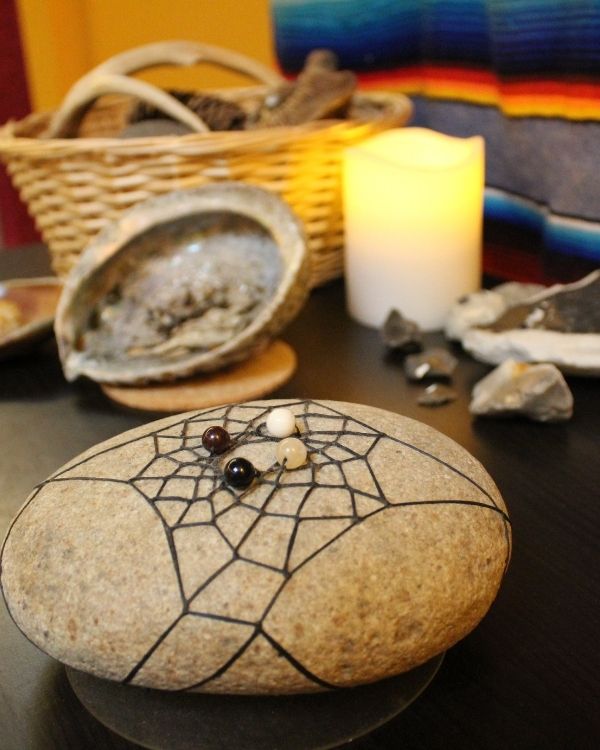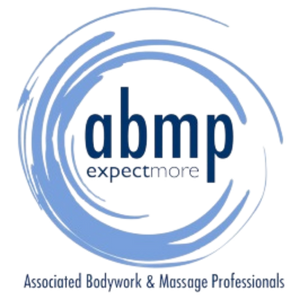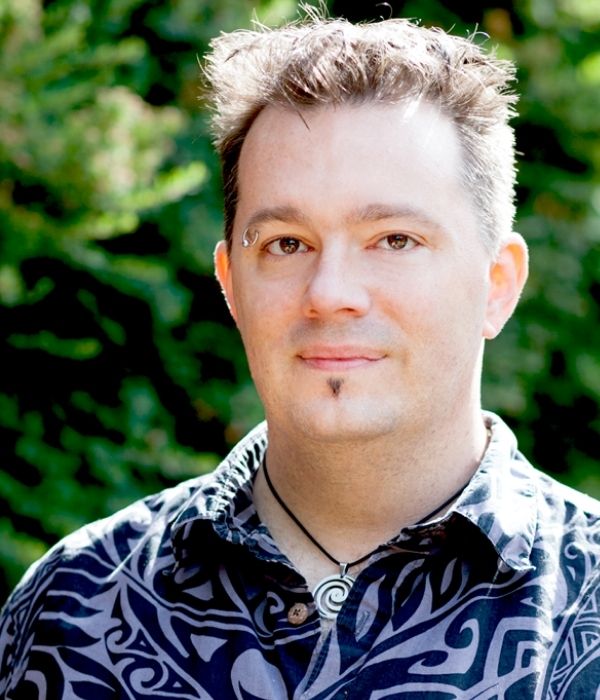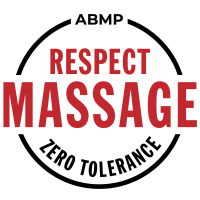About

About
My Approach
Massage shouldn't hurt, period.
A growing body of research is revealing a simple but profound truth: inflicting pain is not an effective way to relieve pain.
Yet so many clients (and massage therapists) have been led to believe that painful “deep tissue” is the standard for clinical massage. And while “no pain, no gain” is a clever phrase, whenever massage therapists (or other manual therapists) mash & grind on a client’s body, digging right into those “deep tissues,” the repercussions often result in even more injury and pain — especially when the tissues aren’t ready, or when it’s not necessary. So instead of “deep tissue…”
I work at the appropriate depth.
I begin with superficial work, then sink layer by layer, as tissues allow. When deeper work is needed, I get there slowly, responsively, avoiding pain and discomfort. This allows me to address a wide variety of physical issues and complaints, gently, powerfully, and effectively. This quiet approach also allows space for my clients to settle in, really feel for restrictions & changes as we work, and possibly even begin to process stored emotions, anxieties, or traumas held throughout the body. My hope is for you to feel grounded, whole, and able to move easily through your activities so you can enjoy your life.
Clients who visit me regularly agree that this approach is more effective, less invasive, and provides longer lasting results: greater range of motion, ease of movement, and relief from pain and discomfort. My work is “structure specific” and responsive, informed by the underlying anatomy and physiology. I listen, feel, and respond to the client’s tissues themselves, never losing sight of the fact that every client is more than a collection of symptoms: each client is a unique human being on their own journey of injury, recovery, and healing.

About
My Approach
Massage shouldn't hurt, period.
A growing body of research is revealing a simple but profound truth: inflicting pain is not an effective way to relieve pain.
Yet so many clients (and massage therapists) have been led to believe that painful “deep tissue” is the standard for clinical massage. And while “no pain, no gain” is a clever phrase, whenever massage therapists (or other manual therapists) mash & grind on a client’s body, digging right into those “deep tissues,” the repercussions often result in even more injury and pain — especially when the tissues aren’t ready, or when it’s not necessary. So instead of “deep tissue…”
I work at the appropriate depth.
I begin with superficial work, then sink layer by layer, as tissues allow. When deeper work is needed, I get there slowly, responsively, avoiding pain and discomfort. This allows me to address a wide variety of physical issues and complaints, gently, powerfully, and effectively. This quiet approach also allows space for my clients to settle in, really feel for restrictions & changes as we work, and possibly even begin to process stored emotions, anxieties, or traumas held throughout the body. My hope is for you to feel grounded, whole, and able to move easily through your activities so you can enjoy your life.
Clients who visit me regularly agree that this approach is more effective, less invasive, and provides longer lasting results: greater range of motion, ease of movement, and relief from pain and discomfort. My work is “structure specific” and responsive, informed by the underlying anatomy and physiology. I listen, feel, and respond to the client’s tissues themselves, never losing sight of the fact that every client is more than a collection of symptoms: each client is a unique human being on their own journey of injury, recovery, and healing.
Background & Training
Darin Stumme, LMT.
Owner, Licensed Massage Therapist
I graduated from Discoverypoint School of Massage in 2013, then returned to the school as an assistant teacher in 2014. I began teaching therapeutic hands-on techniques and business classes the following year, and I’ve been there ever since. I’m as passionate about teaching massage as I am about giving massage.
Prior to massage training, I worked in the graphic design world for nearly 2 decades. I’m no stranger to the corporate world of cubicles & keyboards, with long hours of sitting in uncomfortable chairs at desks that are less than ergonomic. I’d spent countless nights and weekends staring at a computer screen, chalking up hundreds of hours of unpaid overtime — and I was pretty good at it too. But there was something missing… Connection. Support. Humanity.
Eventually I found my way to massage, and I’ve never looked back. (Actually, I did go back once… just to see if I missed anything about my old job. Apparently not!)
I’ve continued to expand my training with over 500 hours of continuing education, including the following:


Slow, specific, and sustained connection with fascial tissue encourage it to unwind, and allows the surrounding musculature to soften and release.
You may experience it as gentle touch — but it’s a powerful approach that works with connective tissue + the autonomic nervous system to deliver profound change.
By listening and responding to one’s cranial rhythm — essentially the “respiration” of the nervous system — we can affect all other systems of the body.
You may experience this as someone quietly holding
your head, applying light pressure to your forehead or temples, or cradling your sacrum as you lie on your back — but your body is likely to respond with a sense of deep relaxation, appreciation, and relief.
With any injury or systemic inflammatory response, the fluid can build up in the “interstitium” — spaces in our connective tissues where fluid travels beyond the bloodstream to provide nutrition, oxygen, and hormones to muscles and organs. That fluid then collects wastes, damaged cells, and unwanted invaders, returning them to the bloodstream to be processed and eliminated.
You may experience MLD as a series of gentle,
relaxing, repetitive, and rhythmic strokes along your skin — but it will accelerate the lymphatic system’s natural process, increasing fluid return and supporting your body’s immune responses.
Muscles inside the mouth and jaw may be small, but
they can seize tightly and spasm, just like muscles in
your shoulders or legs might. This can generate headaches and migraines, neck tension, sinus pressure, teeth grinding, even back pain and difficulty concentrating.
You may experience Intra-oral work as gentle, intense, or unobtrusive — but the unusual sensations will often result in great relief of cranial tension, mental clarity, and a sense of “openness” in your jaw and head you didn’t know was possible.
*Note: only someone with an Intra-oral endorsement from the Board of Health may provide intra-oral massage in the state of Washington, and they must always wear surgical gloves when working inside your mouth. The endorsement requires additional training in anatomy, ethics, and hands-on application. You may ask your therapist to show you the endorsement on their active massage license before receiving work of this nature.
Visceral work is intended to free up space for organs and their supportive connective tissues, allowing them to move and function efficiently. It may be used to treat digestive issues, GERD (acid reflux), hiatal hernias, shortness of breath, PMS and menstrual cramping… and a whole host of other issues related to muscular restriction of the organs and abdominal cavity.
You may experience Visceral work as gentle yet specific pressure in the belly, chest, ribs, or external pelvic area — but you will likely feel expansive changes in your “internal infrastructure,” along with (potential) emotional responses associated with the organs treated.
By using a systematic process of information gathering and assessment, we’re able to target musculoskeletal dysfunction (ie. pain, loss of strength, limited range of motion) at its source. When we can identify the “what” and “where” of an injury, we can direct our treatment to supporting the body’s process of healing and recovery.
You may experience Orthopedic work as a series of tests and assessments, followed by targeted work and movement, then more assessments to measure progress.
Influenced by Structural Integration techniques (see below), Myofascial Balancing feels for preferences and restrictions in the soft tissues around joints and bones, and then attempts to shift them by applying pressure in one direction or another.
You may feel this as a therapist making contact with bones or bony landmarks and applying a twisting or shearing motion — and your body is likely to respond by shifting and adjusting as well.
Structural Integration has been influenced by many bodywork pioneers over the years, with the primary goals of improving musculoskeletal function and reversing improper postural adaptations (what many folks simply call “bad posture”) that take hold in the body.
You may experience this as intense or gentle, targeted or general pressure to bony landmarks, muscles, or connective tissue — and your body hopes to reorganize to an easier ideal.
Scar tissue can be as varied as the injuries that create it. And while a therapist can’t “break up” scar tissue, “erase” it, or “hide” or “make it disappear,” we can help the body adapt to its presence in a more functional way than if it was left untreated.
You may feel Scar tissue work as gentle brushing, crackling and twisting, or a slight burning/pulling sensation — and the hope is that your body will integrate and minimize its impact, visibly or beneath the surface.
Cancer and other medically complex conditions must be treated with caution and thoughtful intention; without proper training, a therapist may inadvertently cause more harm than help. There is no “one size fits all” approach, especially for our friends impacted by profound medical issues.
I will do my best to learn and provide thoughtful care for each condition presented — and I will refer out when I feel a patient’s needs exceed my knowledge or ability to provide adequate care.
Somatic Education works to cultivate a mindful awareness of the body’s innate ability to move freely, beyond its current restrictions. These restrictions may be physical, mental, emotional, or something even deeper.
You may experience Somatic Education as guided meditation, moving through quiet exercises of subtle movements — your body may surprise you with what it’s willing to release when it feels safe and supported enough to do so.
I continue to remain connected with my industry and professional community, staying informed on legal developments and current ethical issues that affect massage therapists and their clients.
On my table, you're allowed to step back, give your mind a rest, and allow your body to tell its story: what's working well, and how it can use more support.
Every BODY has a story...
-S.C.
-L.E.
-S.C.
-A.E.


